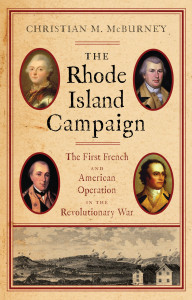It’s a great puzzle of the Revolutionary era. Before 1767, Rhode Island was one of the most gung-ho colonies in resisting British intervention. Newporters had fired on imperial customs enforcers, and Governor Stephen Hopkins had published a sharply written, widely-read, defense of colonial rights. In the annual Gaspee Days celebration, Rhode Islanders still pride themselves on their revolutionary ardor, even claiming to have been “in the fire’s center” during the struggle. Yet in the late 1760s, when other colonies began boycotting British goods in protest of new import taxes, merchants in Providence and Newport dragged their feet. Their reluctance was so pronounced that some colonies stopped doing business with Rhode Island ports.
We’ll never know for sure the motivations of those merchants. Yet the best answer tells us much about how Rhode Islanders really acted in those years. Embracing the legacy of founder Roger Williams, they were quick to defend their autonomy and personal interests, but slow to join others in collective action against a threat.
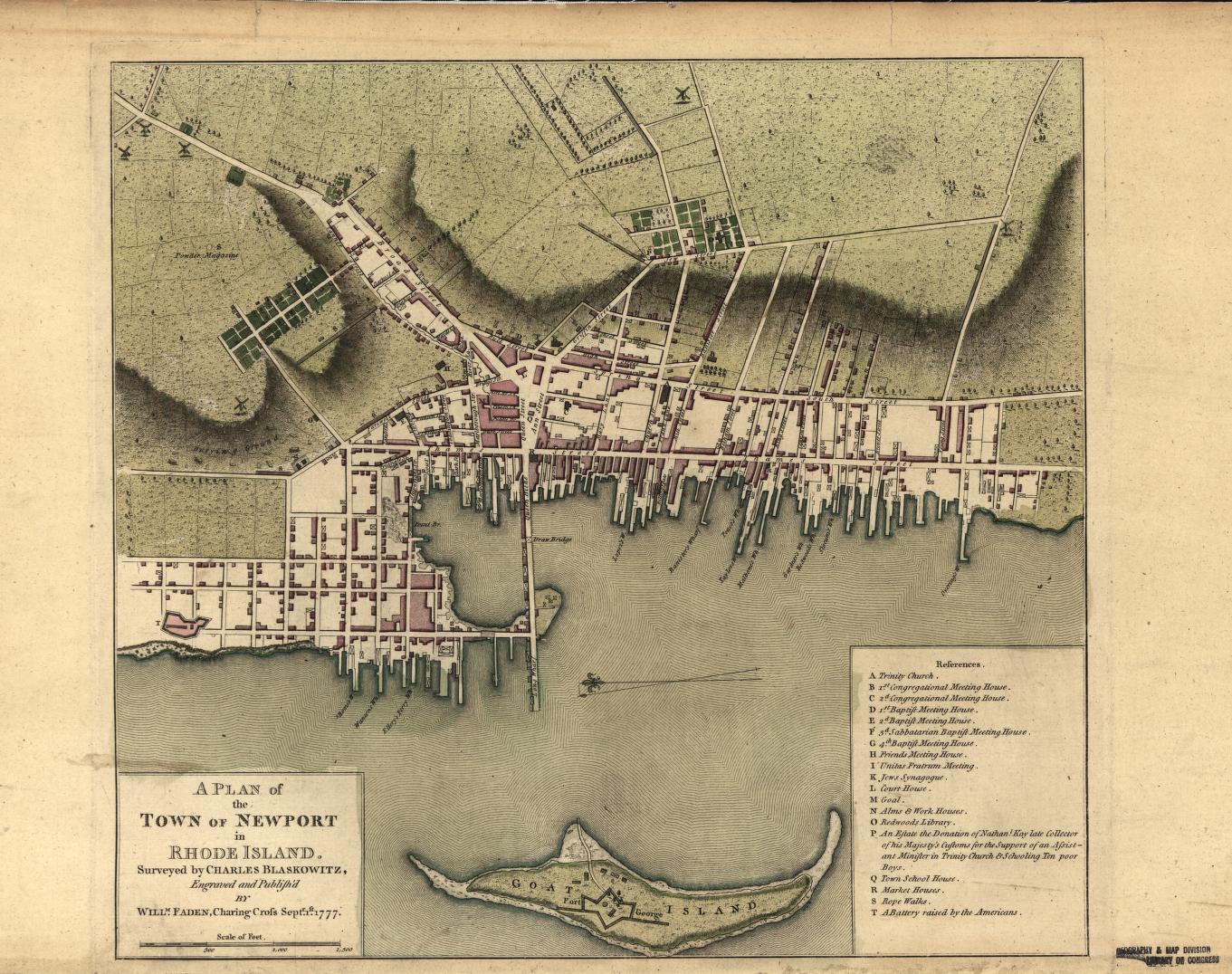
A Plan of the Town of Newport, created by Charles Blaskowitz in 1777. The wharves for the Newport merchants can be seen, including Bannister’s Wharf (named after merchant John Bannister) and Lopez’s wharf (named after merchant Aaron Lopez) (Library of Congress)
The Rising Crisis
The story begins in 1763, just after Britain defeated France in what we call the French and Indian War, and what Europeans call the Seven Years War. Burdened with debt, London decided the colonies needed to shoulder more of the burden of their North American empire. Their first move was a proposed Sugar Act, which actually lowered the existing duty on non-British molasses imports, but instigated a sharp increase in enforcement.
To protest this bill, in January 1764 Rhode Island’s General Assembly approved a detailed “Remonstrance” to the imperial Board of Trade written by Governor Stephen Hopkins. The remonstrance emphasized that the colony’s economy depended on molasses imports, 80% of which came from ports outside the empire. Molasses distilled into rum had become the colony’s main export, crucial for paying for goods elsewhere, including the African slave trade. Strict enforcement of even the lower duty would devastate the colony’s economy, sharply reducing what it could buy from Britain. In effect, the colony exported shipping and manufacturing services, since it imported the main ingredient for run.
The remonstrance emphasized the colony’s extraordinary reliance on maritime commerce, rather than on the plantations long seen as the foundation of colonial prosperity:
The colony of Rhode Island includes not a much larger extent of territory than about thirty miles square, and of this a great part is a barren soil not worth the expense of cultivation. The number of souls in it amounts to about 48,000, of which the two seaport towns of Newport and Providence contain near one third. The colony hath no staple commodity for exportation, and does not raise provisions sufficient for its own consumption. Yet the goodness of its harbors, and its convenient situation for trade, agreeing with the spirit and industry of the people, hath in some measure supplied the deficiency of its natural produce, and provided the means of subsistence to its inhabitants.
London ignored the Remonstrance, and the Sugar Act sailed through Parliament in 1764, so merchants here resisted as they always had, with smuggling, evasion, and bribery. Parliament then passed the Stamp Act of 1765. This was a general tax, harder to avoid, that placed a surcharge on most colonial activities involving paper, from land deeds and newspapers to almanacs and playing cards. The Quartering Act in the same year intensified unrest, as it required the colonies to furnish housing to imperial troops.
Governor Stephen Hopkins responded with a pamphlet, “Rights of the Colonies Examined.” Distributed throughout the colonies, it was perhaps the most cogent argument yet for no taxation without representation. He wrote that the colonists had “equal freedom with Your Majesty’s subjects in Britain, whose essential privilege is to be governed by laws to which they themselves have consented and not to part with their property, but as it called for by authority of such laws.”
Hopkins called for a union of the colonies, and represented Rhode Island in the “Stamp Act Congress” hastily called in 1765, but the gathering had much debate with little practical effect. People on the street had more impact, as mobs essentially pressured stamp collectors here and elsewhere to resign, making the Stamp Act unenforceable. It helped that many merchants, in other colonies but not Rhode Island, supported the protests with informal boycotts of taxable goods.
Parliament cancelled the Stamp Act, and greatly reduced the tax on molasses, but then in summer 1767, passed a set of Revenue Acts initiated by finance minister Charles Townshend. The Townshend duties established import taxes on tea, lead, glass, and other household items, while also increasing the number of customs officials in the colonies. The taxes were small, but by extending taxes to new categories, the move confirmed fears of intervention and domination by the mother country. Those fears increased as colonists learned the tax revenue would pay the salaries of those customs officials – making them independent of colonial legislatures.
Other colonies began calling for boycotts of the taxed articles, or non-importation, almost as soon as the news arrived in August 1767. Some critics in Boston and elsewhere opposed non-importation on the grounds that it would unfairly burden merchants and ruin business. But proponents, under the slogan “Save your money, and you save your country,” eventually won the day. It helped that informal non-importation under the Stamp Act had arguably hastened that tax’s demise.
Massachusetts led the way in late 1767, and other colonies followed over the next year. Most legislatures explicitly banned imports on the Townshend list. In Massachusetts and Connecticut, some town meetings went further and “frowned on all who endeavor to frustrate these good designs,” including any households that bought those British commodities.
In Rhode Island, by contrast, the General Assembly merely supported protests in Massachusetts and elsewhere. Merchants in Providence and Newport initially signaled support for Boston’s non-importation agreement, but unlike counterparts there, they balked when New York and Philadelphia declined to go along. They continued bringing in the Townshend items and selling them where they could, including markets that Boston had long dominated.
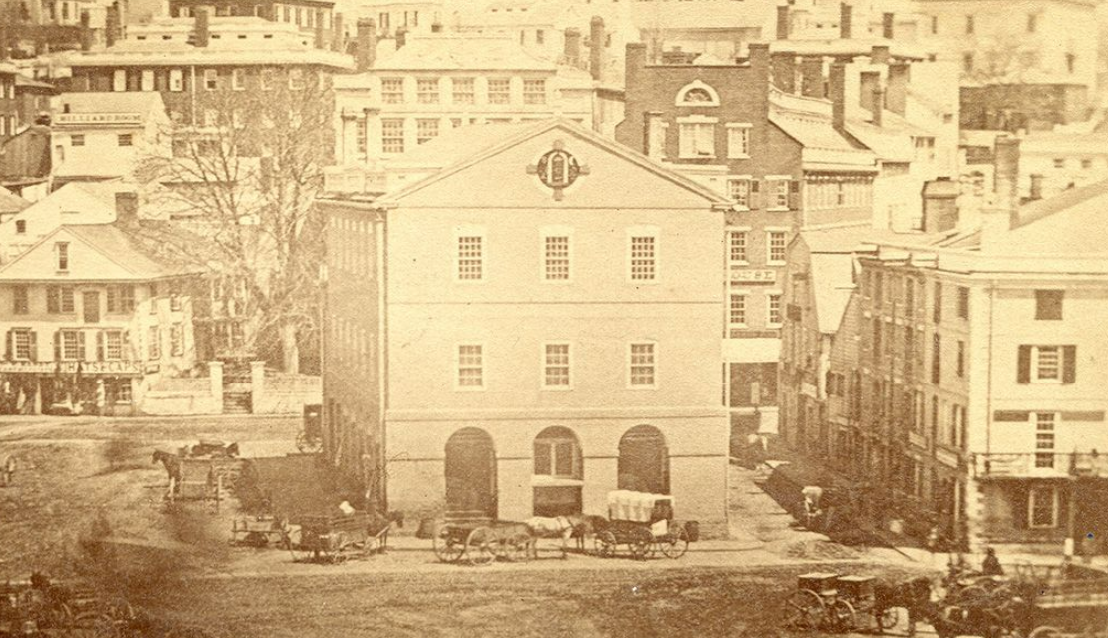
View of the Market House building and other nearby buildings in Providence in 1845. The Market House building was constructed between 1773 and 1775, and reportedly was designed by merchant Joseph Brown and Declaration of Independence signer Stephen Hopkins. It is in good condition today (Providence Public Library Digital Collection)
Merchants in New York and Philadelphia eventually joined Boston after all, and they denounced Rhode Islanders’ continued importation as crass profiteering. They threatened to break off trade with Newport in particular, and several New York merchants apparently made good on this threat in late summer 1769. Finally in November, merchants in Newport and Providence succumbed and entered non-importation agreements.
Actual compliance with the agreements, however, was unclear. Rumors circulated in other ports that Rhode Island’s intent was to “take an advantage of the sister colonies.” Governor Hutchinson of Massachusetts claimed that “Rhode Island professed to join, but privately imported to their great gain.” An anonymous Connecticut writer pointed out that their “adherence to the non-importation agreement would have been acting out of character and in contradiction to the opinion of the country.”
In April 1770, Parliament had repealed some of the Townshend duties, but maintained the tax on tea as well as the independently-salaried customs infrastructure that had caused the merchants so much annoyance. So American merchants were still calling for non-importation.
In May 1770, New York merchants drew up a formal set of Resolves, declaring they would not trade with Newport if the latter would not adhere to the non-importation agreement. Despite begrudgingly signing the agreement, Newport merchants had “greatly advanced their private interests, and injured the cause of Liberty.” Similar pressure came from Philadelphia and Charleston. In response, Newport merchants publicly renewed their non-importation agreement and empowered a committee of inspection to confiscate all good imported contrary to the pact.
During this controversy, when it came to immediate threats, Rhode Islanders hardly acted like meek subjects of the British empire. After learning about the Townshend Acts, with customs ships beginning to harass ships in Narragansett Bay, a Newport mob broke into British storehouses and stole large quantities of molasses. That was in August 1768; later that year, another mob “armed with stones and other weapons” forced customs officers to give up a cargo of smuggled goods. Several months later, in July of 1769, the customs ship Liberty, anchored at Newport, seized two vessels and impressed three sailors from them. When an over-anxious crew member shot at a ship captain arrested for smuggling, a mob not only arrested the Liberty’s captain (threatening his life), but destroyed his possessions and scuttled the ship. These mobs often included prominent merchants in disguise.
This lawless resistance to British rule continued after the merchants had at least publicly supported non-importation. In June 1770, a mob drove customs officers off the wharf and restored a batch of French rum they had seized. And in 1772, another Newport group, in full disguise, went secretly at night and returned seized custom goods to their owners. These are only the actions recorded by residents or that led to formal British complaints. The city was so notorious as a hotbed of resistance that when London first heard about the Gaspee attack in July 1772, officials assumed it had happened near Newport, not Providence.
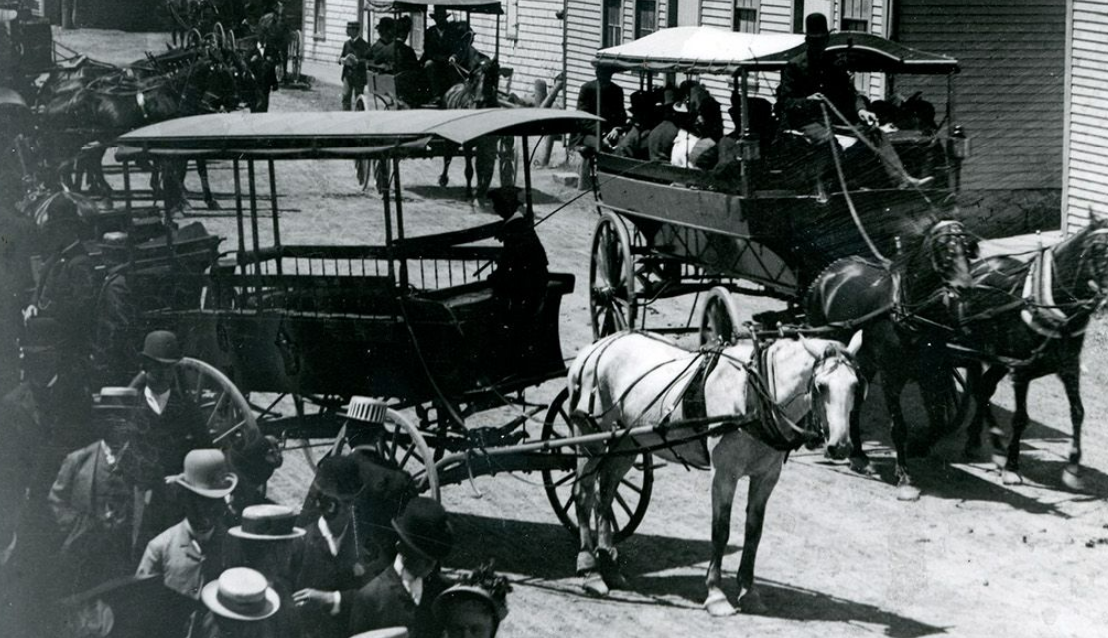
Commercial Wharf in Newport in 1882, showing commercial buildings, pedestrians and horse-drawn carriages (Providence Public Library Digital Collections)
Other colonies had no objection to this resistance, but they distrusted Rhode Island on issues of collective support. They got further evidence in 1774, when Britain closed Boston’s harbor. A public meeting in Newport agreed that unless that city was defended, the empire “may at pleasure destroy the trade and shut up the ports at every other colony.” Yet Newporters dragged their feet in sending aid to the poverty-stricken area. While money and supplies poured in from other New England towns, Newporters continued to debate. Only in March 1775, a year after the closure, did they send relief, and it was a meager 79 pounds. Not surprisingly, Bostonians were less than generous when British occupation largely destroyed the City-by-the-Sea in 1779.
Even the aftermath of the Gaspee Attack shows this reluctance to join collective resistance. The Board of Trade had responded by intending to take all accused attackers to be tried in England, not here. This was the first time the empire had ever claimed the right to try accused colonists back in London. It was Virginia’s alarmed legislature, not Rhode Island’s, that created the Committees of Correspondence that helped turn the skirmishes around Boston in April 1775 into full-scale war.
Rhode Island’s Delay
Why were merchants in Providence and especially Newport reluctant to join in non-importation? That path was surely the strongest way for the colonies to register their opposition to Parliamentary taxation, yet Rhode Islanders delayed.
The immediate answer involves the long-term strategies of merchants in the two towns. Unlike merchants in Salem and other Massachusetts ports, Rhode Islanders had long chafed under Boston’s shadow. They resented Boston’s domination of trade with Great Britain and elsewhere, and were always looking for a way to seize a share of that shipping. The same could be said of Providence, where merchants such as the Browns had long worked to make their town an independent ocean port, not merely a supplier to Newport. Newport had flourished in the decades before the revolution on just such daring and opportunism, and it’s no surprise that its merchants saw in non-importation a way to gain some market share over Boston.
After all, as the Remonstrance pointed out, Rhode Island lacked a large and fertile hinterland to supply trade goods – the colony depended on shipping services and the associated risk-taking. As historian Elaine Crane pointed out, “Merchants in Newport may have been sympathetic to the goals of non-importation, but it was difficult for a community completely dependent on trade to deny itself even a small part of that trade.” And since success in commerce depended on independently taking on risk, Rhode Islanders had to be more assertive than people elsewhere.
That’s what happened in the 1730s, when London abruptly forbid all crown colonies to issue paper money. Massachusetts had to back down, but because Rhode Island was a charter colony, it continued issuing the currency. The result was a great expansion in Newport’s trade, as it began large-scale shipping to the Caribbean. As one Bostonian complained in 1731, “With this money, they fitted out at least thirty sail of vessels…and bring their molasses, sugar, and other goods from those places direct hither.”
The same dynamic resulted in Newport greatly expanding its terrible triangular slave trading to Africa, which before 1730 had been just as small as Boston’s. The result was Newport’s first Golden Age of prosperity, 1735-1770 – until the struggle for independence took the colonies out of the British empire and severely disrupted maritime patterns and relationships.
But there’s a deeper reason for this resistance, and we can find a hint of it in the inconclusive Stamp Act Congress. For all of Governor Hopkins’ clarity in resisting imperial intervention and promoting colonial union, he did little to lead a general, practical resistance to the mother country. Colonial Rhode Islanders cherished their autonomy, but had little inclination to lead other colonies in general resistance to imperial rule.
Part of this is surely the usual conservatism of merchants, who, as Arthur Schlesinger Sr. argued, led the early resistance to empire but then delayed in actually seeking independence. And part of it was likely the longstanding timidity of Rhode Islanders, who feared that overt, official protests such as in Virginia and Massachusetts might lead the King to revoke their remarkable autonomy under the charter of 1663.
But much of it surely follows from the colony’s early history. Roger Williams and other founders saw themselves as non-conformists separating themselves from the corrupt colonies around them. The few settlers who joined them over the ensuing decades were likewise misfits who found the other colonies distasteful. Aside from some Quakers and Jews, hardly anyone arrived in Rhode Island directly from Europe.
That same recalcitrance continued in the decades leading up to the Revolution. Contrast the lack of enthusiasm for non-importation, with the alacrity and popular support of mob attack on British officials. Weeks after the Gaspee attack, a royal commission of investigators could find no credible witnesses against the well-known perpetrators. Non-importation involved joining the other colonies, while destroying customs ships was about preserving local autonomy.
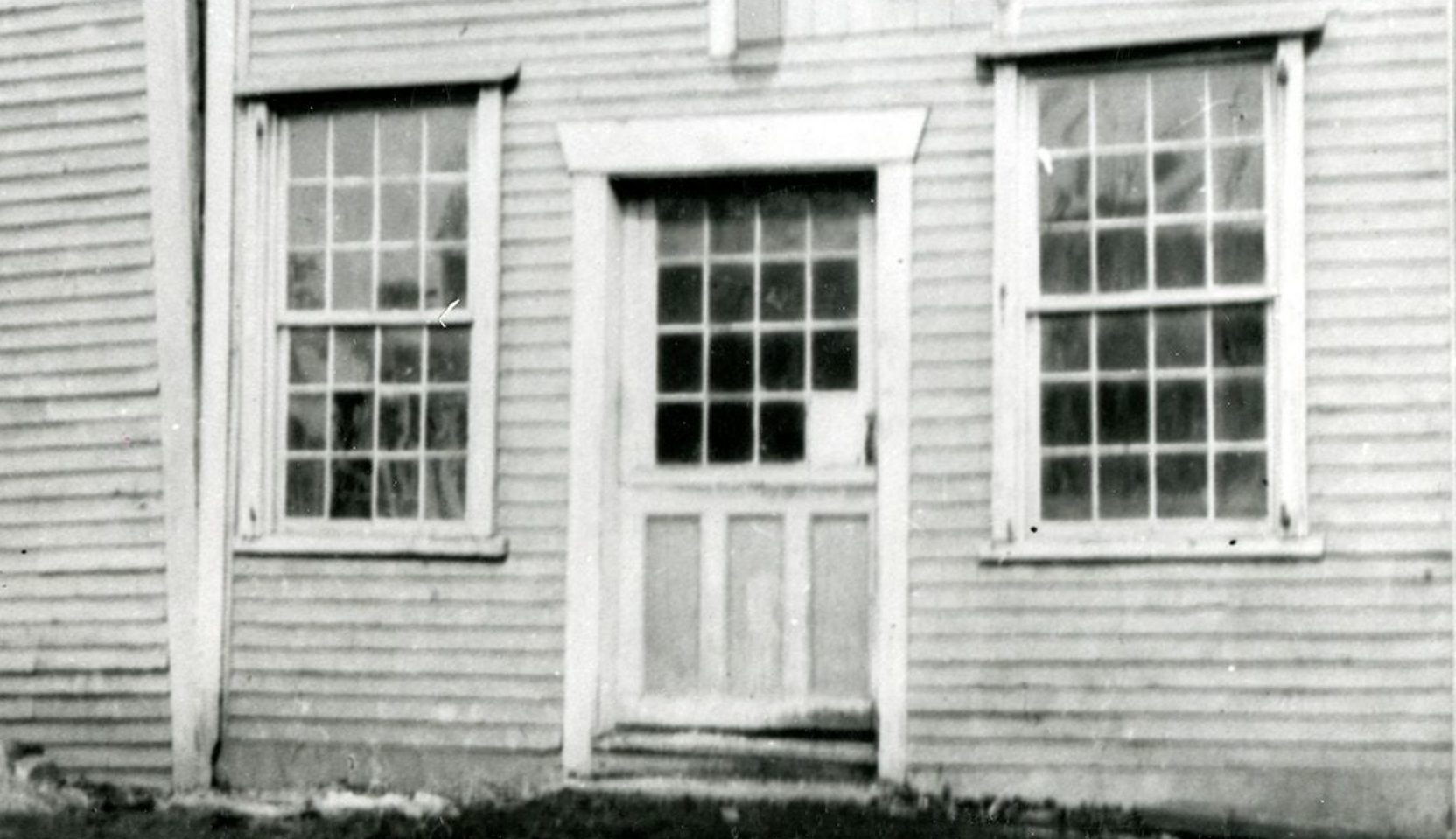
View of the building for A. Hildreth Block & Pump Maker on Bowen’s Wharf, 1885 (Providence Public Library Digital Collections)
That tradition of recalcitrance continued, most notably in the newly independent state’s initial refusal to join the new federal union. And even in the 1920s, when the textile industry declined all over New England, Rhode Island factory owners declined to join a regional association to address the problem – instead they formed a statewide group. Massachusetts may call itself the “spirit of America,” but Rhode Islanders rarely looked beyond their own borders.
Sources
This essay drew on the General Assembly’s 1764 copy of the Remonstrance, now held at the R.I. State Archives. See also John R. Bartlett, ed., Records of the Colony of Rhode Island, 1757-1769, vol. 6 (Providence: A. C. Greene and Brothers, 1861), 379-80.
Elaine Forman Crane, A Dependent People: Newport in the Revolutionary Era, Fordham University Press, 1992, especially chapter 9.
David Sherman Lovejoy, Rhode Island Politics and the American Revolution, 1760-1776, Brown University Press, 1958, chapter 7.
Margaret Newell, From Dependency to Independence: Economic Revolution in Colonial New England, Ithaca: Cornell University Press, 1998, chapter 10, especially pp. 186-87.
Arthur Schlesinger, Sr., The Colonial Merchants and the American Revolution, 1763-1776, (publisher unknown), 1917, chapters 4-5.
Florence Simister, The Fire’s Center: Rhode Island in the Revolutionary Era, 1763-1790, RI Bicentennial Foundation, 1978, chapters 2-3.

























